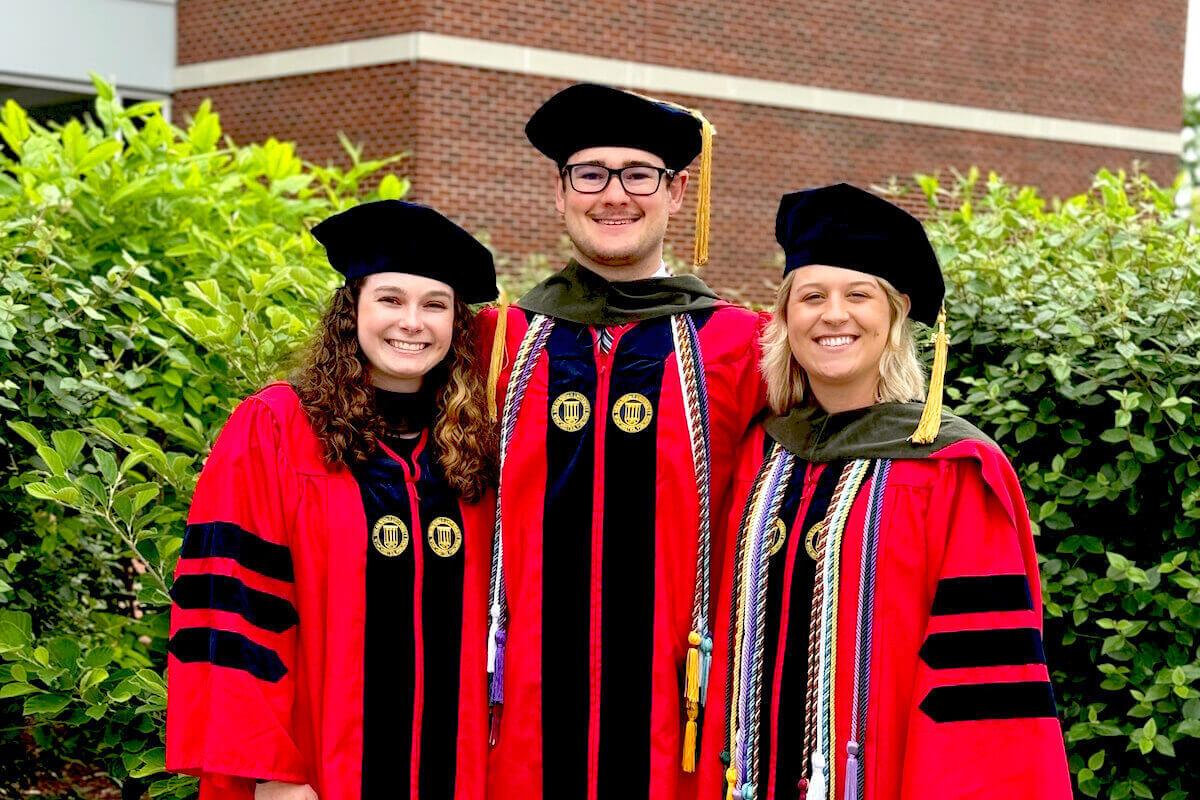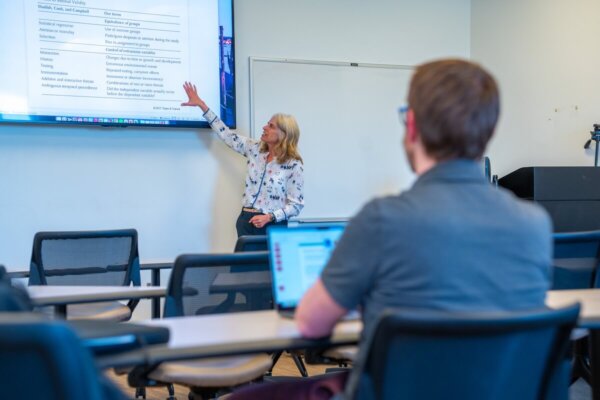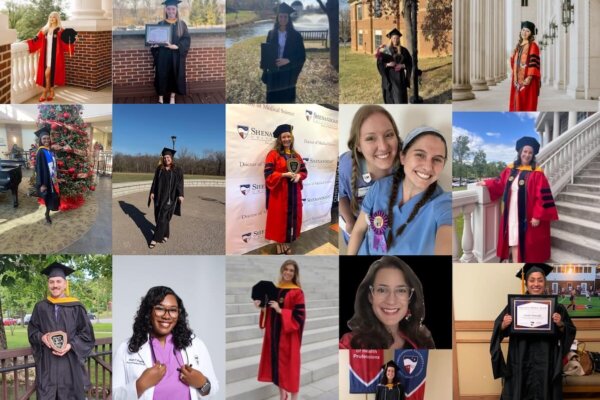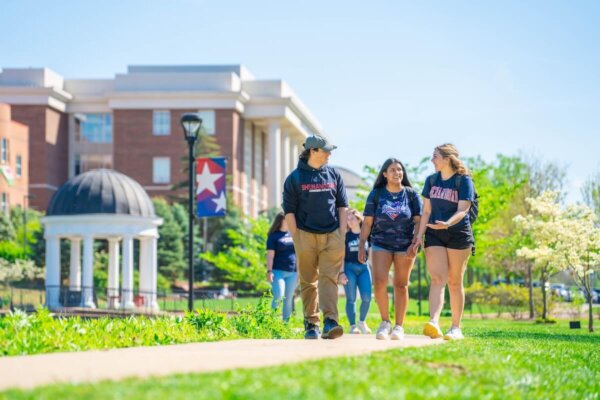Getting Youth Excited About Science
SU students Create Maker Engineer Lab at Elementary School
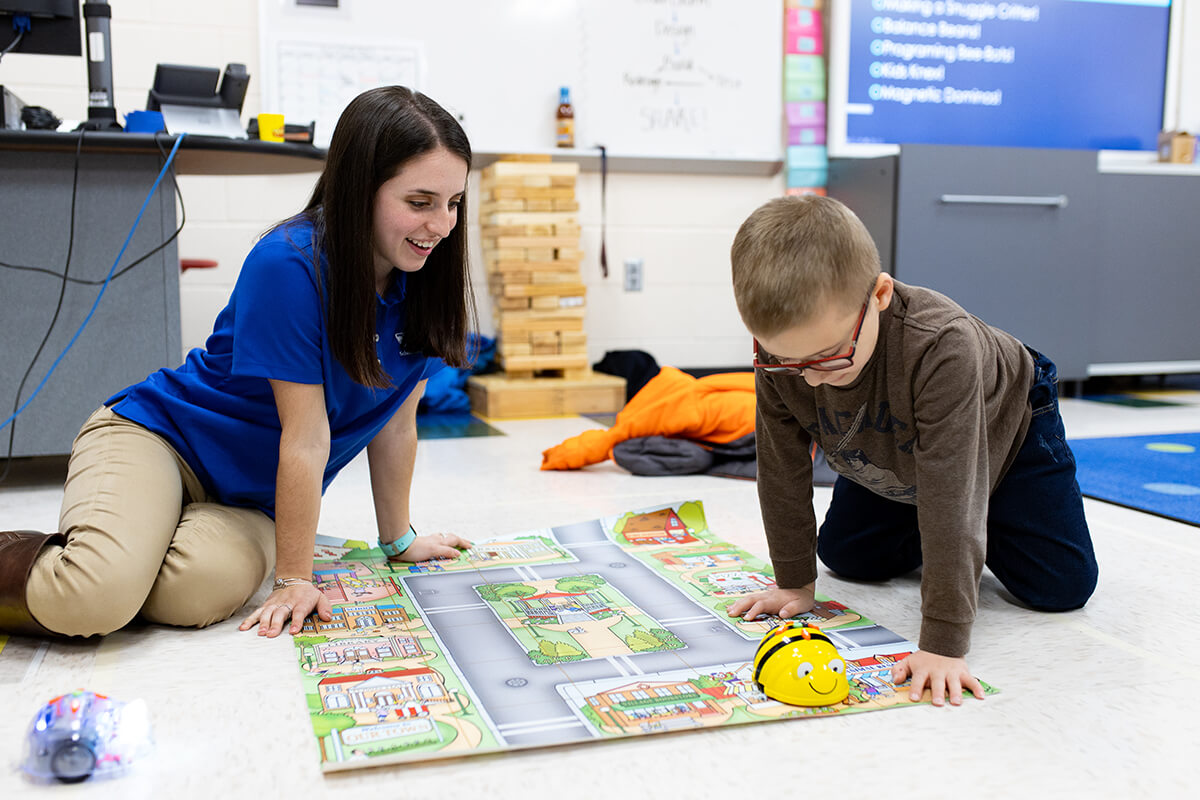
This semester, nine Shenandoah University students are teaching hands-on science lessons as part of a partnership with local elementary school students.
Through their Reasoning Skills I: Science class, Shenandoah students run a Maker Engineer Lab at John Kerr Elementary School to earn practicum hours. They teach elementary school students engineering skills and computer science, while getting the opportunity to not only learn theory, but to put it into practice immediately.
Jennifer LaBombard-Daniels, Ph.D., is a visiting assistant professor in the School of Education and Leadership at Shenandoah and also runs a STEAM lab (science, technology, engineering, the arts, and mathematics) at John Kerr. Her connections with both schools brought the partnership to fruition.
I believe that designing an engineer model around practicum settings helps aspiring teachers to freely practice, make mistakes and rework skills through collaboration, creation and modification.”
Jennifer LaBombard-Daniels, Ph.D.
The Maker Lab consists of a SMART board, 12 computers, a Maker Cart and an eclectic assortment of materials that Shenandoah students use in challenges for the younger students. The elementary-aged students must ask questions about the challenge, brainstorm with teams, design a product to solve the problem, and then test and modify the product in some way.
Challenges include building bridges, learning about habitats, making jellyfish, creating crayon art by melting crayons, and building 3D shapes out of Play-doh to teach students about cubes, spheres and rectangular prisms. Shenandoah students are responsible for creating and teaching their own lessons and coming up with challenges.
We are creating an environment that is fun for the students, and getting them out of their seats. Our vision of the Maker Lab is to provide students with choice, to challenge the students, and to get students out of their natural environment and excited about learning.”
Kayla Robey ’20
Amanda Kresge ’20, said the Maker Lab has taught her that a classroom does not always have to be traditional.
I can create my own ways to teach the students, help them be creative, and think outside the box. I was never a fan of the ‘sit and get’ teaching strategy. The students should not have to sit and listen to the teacher lecture at them and then complete a worksheet. The way students remember is through experience and interaction, which is why this is beneficial to the students of John Kerr.”
Amanda Kresge ’20
Mckensey Lavin ’20, said she enjoys the hands-on lessons and how students have a bigger say in their learning.
This type of learning is really important because giving choice to students allows for them to have a deeper understanding of the subject being taught.”
Mckensey Lavin ’20
Shenandoah students are at the elementary school an average of eight to 12 hours a week.
